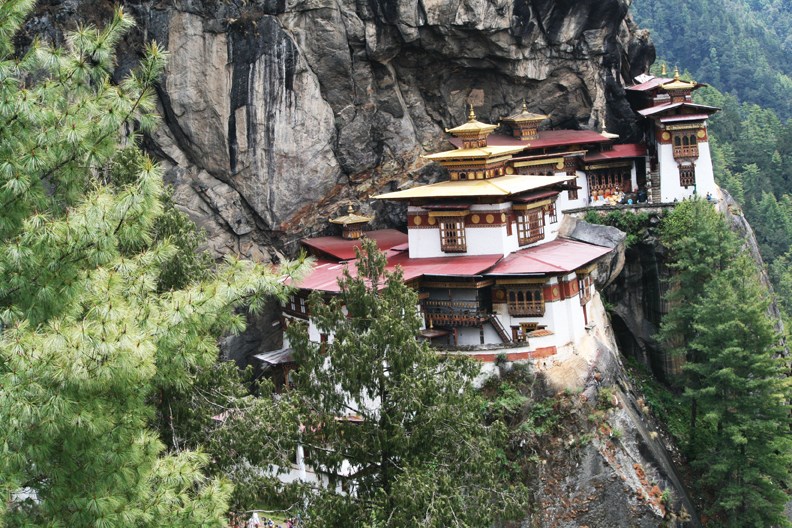We are a small group of Canadian travellers on a 15-day journey traversing Bhutan from Samdrup Jongkhar in the lesser-travelled eastern area on our way to Paro in the west.
Western Bhutan is comprised of six main dzonghags (districts) including five that we have already visited – Wangdue Phodrang, Punakha, Thimpu, Paro and Ha. All are located in valleys ranging from 1,306 to 2,700 metres.
We first arrived in Punakha and found the fortress surrounded by jacaranda trees in full bloom. The dzong may arguably be the most magnificent in the nation. We walked into three courtyards that had walls lined with murals detailing the teachings of Buddhism. Sherab and Jatsho, our Bhutanese guides, explained the significance of the panels. Samsara depicts the wheel of existence, the life and marvels of Prince Siddhartha and his transition to Lord Buddha, the incarnations of the great masters and their triumph in the conquering of demons.
Nearby Wangdue Pho-drang offered refuge by a river and the chance to visit the temple of the Divine Madman whose feats are immortalized in phallic symbols painted on the exterior of the houses we pass. To get to the temple, we walked zigzag through newly-planted rice paddies.
As we near the capital district of Thimpu, we cross the Dochula Pass where prayer flags and 108 stupas mark the 3,111-metre boundary between the adjoining districts. Today it is too cloudy to see the snow-capped peaks, and for the first time since leaving Canada one month ago, the temperature is colder than I prepared for.
On arrival, I see that Thimpu has grown dramatically since my first visit 15 years ago. It is a largish city now with 100,000 plus residents. New hotels, cafés and souvenir shops extend a great distance. Still so many of the industries are cottage scale. We visit a paper-making centre and a weaving centre where the intricacies of hand-making skills are exemplified. Some of the women’s traditional kiras in process of completion at the weaving centre will take another 10 months to finish. The price tag reflects the workmanship at $1,700 to $2,500 USD per piece.
Next stop is the Paro Valley. Some of my travel mates and I are quite winded here even though the altitude is 700 metres lower than two of the locations we visited earlier. The National Museum is worth the visit, and I am impressed that so many of the ecozones were experienced, and that a multitude of the big animals and birds had already been seen either in Bhutan or during our pre-trip to Kaziranga National Park in Assam, India.
We walked from the museum to the Paro Dzong (fortress) and again got a chance to learn more about the religious passion of the nation. We have entered into the fifth month of the lunar calendar, during which the entire nation will be earning extra merit at their local temples by praying and making offerings. We witnessed monks making cakes for the altar and chanting in the temples, as they have done in the same places for almost 14 centuries. Drums, long horns and short horns emanated from the temples, and we were permitted inside while the rituals were occurring.
Paro is also where the only international airport is located. There is only one airline flying in and out – Druk Air, the national carrier of Bhutan. From our hotel we watched planes take off and land in the early morning when the lift was ideal for flight. Planes weaved between the green hills and rose towards the higher mountains visible when the clouds parted.
A day trip brought us to the most Western district, Ha, which was restricted to tourists until 2002. It borders India and Tibet and, as in many border regions, can be somewhat unstable. To reach Ha, we crossed the highest pass, Chelala, at 3,700 metres. Most of the travellers we met were from India. They can drive here, and have the advantage of being admitted without a visa requirement or a $250 USD per diem fee. They still pay a high amount to be here, but the nation is thankful for all the aid provided by their closest ally. The roadwork is provided as aid by India, part humanitarian and part an exchange for lands annexed to India in the 1950s.
I have been shocked at the limited number of visitors from Europe and North America. We have only encountered a few groups and a handful of single travellers in the two-and-a-half weeks we have been travelling across the country. No matter the group size, all are led by a Bhutanese guide. Thankfully we have the best with us.
See www.toursexplore.com for more.



